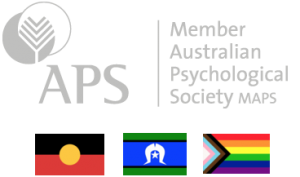PTSD was classified as an Anxiety Disorder in the DSM-IV, consequently fear/anxiety was regarded as the core feature of the presentation of PTSD. This remains the case today, however the DSM5 reclassified PTSD into its own category and has outlined variations in the individual expression of the overall disorder, or differences in how the original affect of fear is expressed symptomatically. This highlights the complexity and diversity of presentations amongst clients with PTSD. These variations in the clinical presentation of PTSD are helpful for clinicians to consider, particularly with the less typical presentations.
The five different expressions of PTSD from DSM5 are outlined here:
1. Fear-based re-experiencing, emotional, and behavioural symptoms
Clients with this type of presentation typically have a strong alarm response to present or imminent danger (either real or perceived). They may have prominent fear-specific avoidance behaviours. Some examples include: A client who can not return to evening travel on a train because they fear a repeat assault. A client who fears being shot, so will not leave their house. A motor vehicle accident victim who fears being in a car.
2. Anhedonia or dysphoric mood states and negative cognitions
These clients can present with lowered mood and appear to be stuck in their thoughts, they often describe things in terms of negative beliefs about themselves and their actions during a traumatic event and afterwards. They may present with overwhelming guilt or shame. They no longer enjoy much of life, the things that used to be a source of pleasure no longer appeal. If trauma is not assessed they may appear to be suffering from depression.
3. Arousal and reactive-externalizing symptoms
These clients may report feeling stressed all the time, they describe feeling constantly tense or on-edge, experiencing irritability or anger and trouble sleeping. The symptoms reported by this group differ from the first as they tend not to be as specific. These individuals may be so hyper aroused that they report hearing or seeing things that aren’t there. (E.g. believing innocuous sounds in the night represent danger). They may also be easily startled or frightened. For some clients, this reactivity may be channelled in self-destructive or risk taking behaviour, such as speeding, or drinking and so on.
4. Dissociative symptoms
These clients may describe frequently zoning out and feeling disconnected from the world and the people around them. Some may report feeling disconnected from their body as if observing their own physical and mental processes.
5. Combinations of these symptom patterns.



